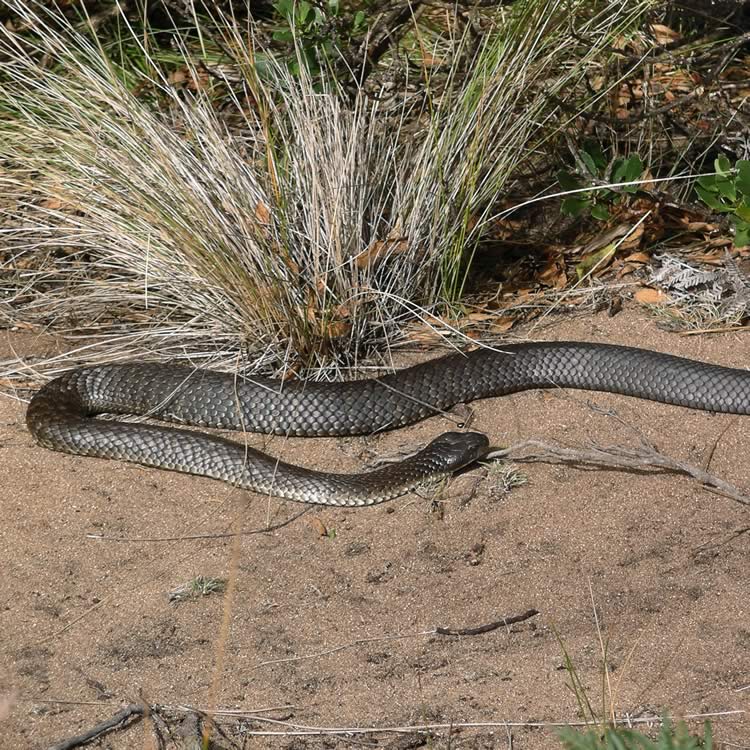Tiger snake

Community type
Habitat type
Tidal wetlands and macrophytes beds
These snakes are highly variable in colour, often banded with black and yellow stripes, through to jet black. Tiger snakes give birth to 12 to 40 live young. There are many different morphs or regional groups with differences in colour, body size, or structure. tiger snakes are found in coastal environments, wetlands, and creeks where they often form territories. Areas with an abundance of prey, such as wetlands can support large populations. In a wetland habitat they eat small mammals such as mice and Antechinus, frogs and small birds and their eggs. As for most snakes they inject venom when they bite prey, but tiger snake venom is also toxic to humans, so they are very dangerous. Their venom causes numbness, and sweating, followed by rapid onset of breathing difficulties and paralysis. Snakes lack external ears and internal eardrums, but are able to hear through their jaws. They rest their jaw on the ground and feel vibrations from footsteps or even the faint vibrations from sound waves carried by the ground. Stomping your feet on a bush track will let snakes know you are there. Avoid any actions that might threaten or scare snakes, back away, and on most cases a snake will very quickly disappear as soon as it senses you.
